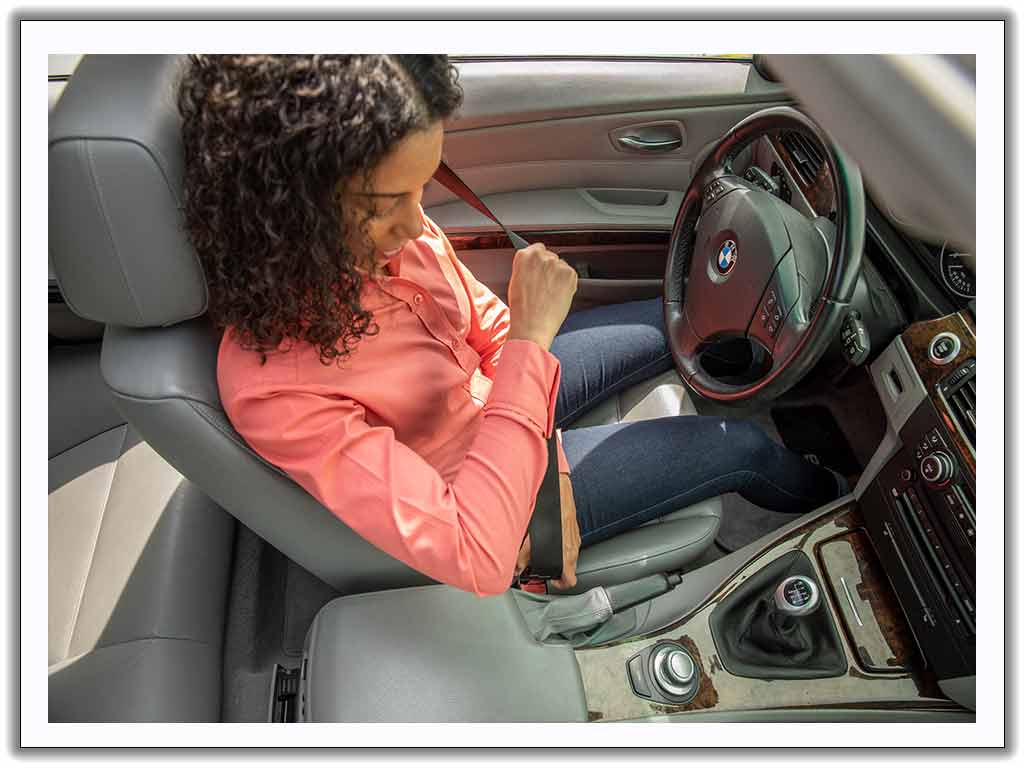
By now, we’re all pretty familiar with the importance and effectiveness of seat belts. Every car comes with seat belts installed (in fact, it would be against the law for new cars not to have seat belts), every state has some sort of law requiring drivers and passengers to buckle up, and all of us have seen the "Click It or Ticket" campaigns splashed across billboards or the nightly news. Seat belts are a familiar and integral part of our everyday lives. It’s almost second nature (or should be) that we buckle up as soon as we get in the car, and for good reason: seat belts can save your life. According to the CDC, seat belts reduce serious crash-related injuries and deaths by half. And since 1975, NHTSA estimates that seat belts have saved almost 375,000 lives.
So, it may be kind of shocking to learn that seat belts and cars did not always go hand-in-hand. In fact, when vehicles were first invented, they didn’t have seat belts at all. And when car manufacturers first started to offer seat belts as an option in 1949, most buyers did not want them and ordered them to be taken out.
Yeah. Shocking, right?
The complete history of seat belts is full of interesting twists and turns. Let’s take a look.
1804
The first seat belt was actually invented before the car, as counterintuitive as that might sound. George Cayley, an English engineer, inventor and aviator who is sometimes referred to as the "father of aviation" designed the seat belt to keep pilots in gliders. He is also credited with designing the first glider to reliably carry a human in the air in 1853, nearly 50 years before the Wright brothers took their infamous flight in Kitty Hawk.
1885
The first patented seat belt was created in 1885 by American Edward J. Claghorn in order to keep tourists safe in New York City taxis. This first patented seat belt was rudimentary in nature and consisted only of a lap belt.
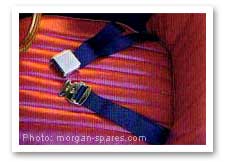
1921
The first child car seats---if you can really call them that---were invented in 1921, after the Ford Model T was introduced. Initially, car seats were seen as a means of containing children for the convenience of their parents, rather than trying to keep them safe. These first car seats were essentially sacks with a drawstring attached to the seat, so they provided very little in terms of safety or protection in the event of a crash.
1930’s
Beginning in the 1930’s, physicians started to take note of lap belts’ impact on protecting passengers in car crashes, and they began to urge vehicle manufacturerers to provide lap belts in cars.
1940’s
It wasn’t until 1949, however, that American car manufacturers would start to give in to these physicians’ requests. When Nash Motors, the first American car manufacturer to offer seat belts as an option, installed seat belts in roughly 40,000 of their vehicles, buyers were outraged. They did not want the seat belts in their cars, viewing them as an uncomfortable nuisance, and requested that they be removed. Nash reported that they only sold 1,000 of the 40,000 cars with the seat belts installed.
1950’s
It wasn’t until the 1950’s that seat belts started to really gain traction. In 1954, the Sports Car Club of America required all competing race car drivers to wear lap belts. The next year, the National Safety Council voted to support the installation of seat belts in all vehicles.
Around this time, in 1958, Swedish engineer Nils Bohlin invented the 3-point lap and shoulder seat belt for Volvo, the first implementation of what closely resembles the modern lap and shoulder seat belt we use today. Up until this point, only a lap belt had been used.
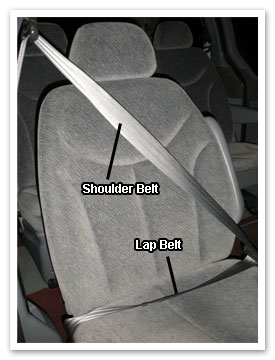
1960’s
Still, it wasn’t until 1968 that all new American vehicles were required to have seat belts in their cars. At this time, cars were only required to have seat belts; drivers and passengers were still not legally required to wear them.
The 1960’s also saw some advances in child safety. American Leonard Rivkin created a car seat with a metal frame surrounded by a buckle and Briton Jean Ames designed a rear-facing seat with a Y-shaped strap that’s similar to today’s models.
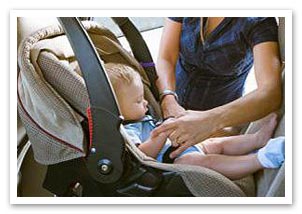
1970’s through 1990’s
The world’s very first seat belt law that required passengers and drivers to buckle up was created in Victoria, Australia in 1970. Over the next two decades, other countries and states in the U.S. started to follow suit. However, it took until 1995 for all states (except New Hampshire) to enact "Click It or Ticket" laws.
Child safety standards lagged behind the development of seat belt laws. It wasn’t until 1978 when Tennesee became the first state to require child safety seats to be used.
Today
It’s safe to say that seat belts and child safety standards have come a long way since their infancy. Today, all states have a seat belt law requiring drivers and passengers to buckle up and child safety seats have strict regulations tailored to the age and weight of the child.
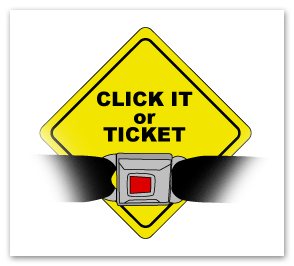
If you’re interested in traffic safety, try taking one of our defensive driving, insurance discount, mature driver improvement or driver education courses. As an added bonus, depending on the course you take, you might earn an insurance discount or get safe driving points added to your record.
By now, we’re all pretty familiar with the importance and effectiveness of seat belts. Every car comes with seat belts installed (in fact, it would be against the law for new cars not to have seat belts), every state has some sort of law requiring drivers and passengers to buckle up, and all of us have seen the "Click It or Ticket" campaigns splashed across billboards or the nightly news. Seat belts are a familiar and integral part of our everyday lives. It’s almost second nature (or should be) that we buckle up as soon as we get in the car, and for good reason: seat belts can save your life. According to the CDC, seat belts reduce serious crash-related injuries and deaths by half. And since 1975, NHTSA estimates that seat belts have saved almost 375,000 lives.